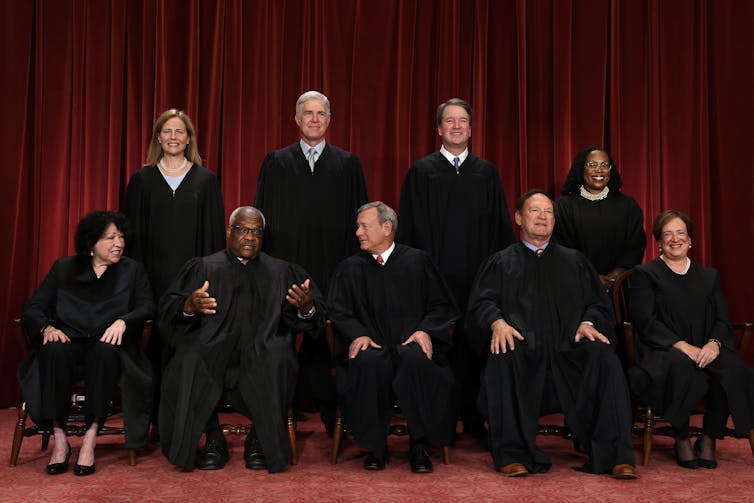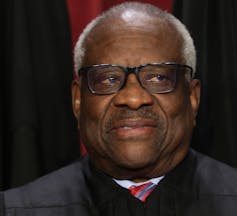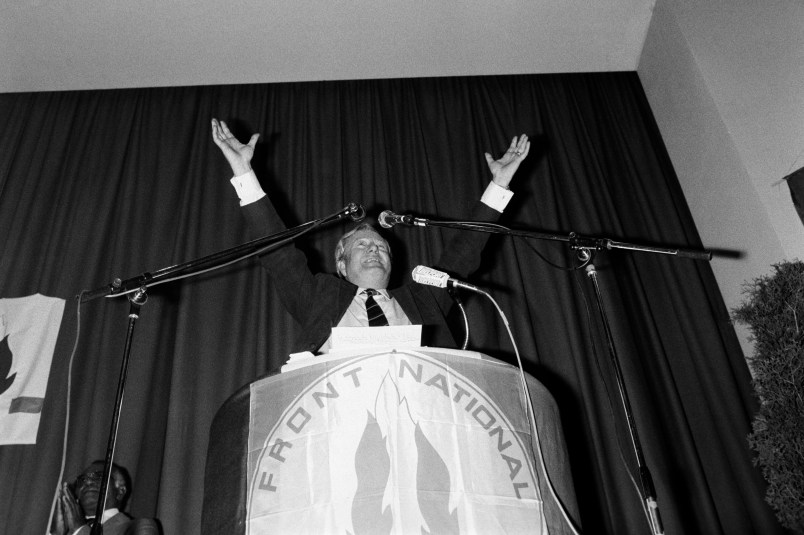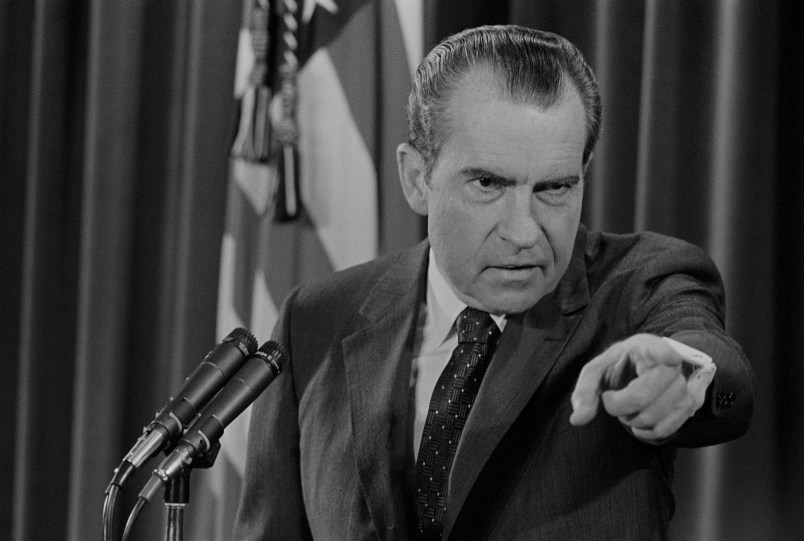This article is part of TPM Cafe, TPM’s home for opinion and news analysis. It was originally published at The Conversation.
In an anticipated but nonetheless stunning decision expected to have widespread implications on college campuses and workplaces across the country, the conservative majority of the U.S. Supreme Court on June 29, 2023, outlawed affirmative action programs that were designed to correct centuries of racist disenfranchisement in higher education.
In the majority opinion about the constitutionality of admissions programs at the University of North Carolina and Harvard, Chief Justice John Roberts wrote that Harvard’s and UNC’s race-based admission guidelines “cannot be reconciled with the guarantees of the Equal Protection Clause.”
“College admissions are zero sum, and a benefit provided to some applicants but not to others necessarily advantages the former at the expense of the latter,” Roberts wrote.
Though not a surprise, the decision in Students for Fair Admissions v. Harvard and Students for Fair Admissions v. University of North Carolina drew widespread condemnation from civil rights groups and praise from conservative politicians.
In my view as a race and equity legal scholar focused on business, the court had subtly established an affirmative action expiration date in its 2003 Grutter v. Bollinger decision.
In that case, Associate Justice Sandra Day O’Connor wrote in her majority opinion that “race-conscious admissions policies must be limited in time,” adding that the “Court expects that 25 years from now, the use of racial preferences will no longer be necessary to further the interest approved today.”
In this opinion, the court moved that deadline to the forefront, and it is no longer the throwaway line that some believed at the time.
What the court’s decision in these 2023 cases means for college admissions officers is that the mere mention of using race to address racial and arguably gender disparities is unconstitutional. By their very nature, academia and corporations are conservative, and general counsels at these entities are likely to caution against any program targeting historically underrepresented people.
At the most optimistic, this ruling forces higher learning institutions to revise programs and look to remedy past wrongs on a case-by-case basis.
But its my belief that O’Connor’s deadline was one of desire and not reality.
The vestiges of past discrimination and the unfortunate existence of ongoing discrimination continue. No deadline has made these wrongs and their impact disappear.
In her dissent in the UNC case, Associate Justice Ketanji Brown Jackson details the reality:
“With let-them-eat-cake obliviousness, the majority pulls the ripcord and announces ‘colorblindness for all’ by legal fiat. But deeming race irrelevant in law does not make it so in life. And having so detached itself from this country’s actual past and present experiences, the Court has now been lured into interfering with the crucial work that UNC and other institutions of higher learning are doing to solve America’s real-world problems.”
The court’s opposition grew slowly
In their lawsuits against North Carolina and Harvard, the anti-affirmative action organization Students for Fair Admissions argued that the schools’ race-conscious admissions process was unconstitutional and discriminated against high-achieving Asian American students in favor of traditionally underrepresented Blacks and Hispanics who may not have earned the same grades or standardized test scores as other applicants.

The primary Supreme Court-level battle over affirmative action started during the 1970s when a legal challenge reached the Supreme Court in Regents of the University of California v. Bakke.
In that 1978 case, Allan Bakke, a white man, had been denied admission to University of California at Davis’ medical school. Though ruling that a separate admissions process for minority medical students was unconstitutional, Associate Justice Lewis Powell wrote that race can still be one of several factors in the admissions process.
Since then, the Supreme Court has issued different rulings on whether race could be used in college admissions.
In the 2003 Grutter v. Bollinger case, O’Connor wrote the majority opinion that endorsed the University of Michigan’s “highly individualized, holistic review” that included race as a factor and had been legally challenged.
Most recently, in Fisher v. University of Texas at Austin in 2016, the court reaffirmed its belief in schools that “train students to appreciate diverse viewpoints, to see one another as more than mere stereotypes, and to develop the capacity to live and work together as equal members of a common community.”
A colorblind society?
The ruling is not a complete loss for supporters of diversity efforts.
Roberts wrote that prospective students should be evaluated “as an individual — not on the basis of race,” although universities can still consider “an applicant’s discussion of how race affected his or her life, be it through discrimination, inspiration, or otherwise.”

Applicants then are still able to explain their background in their essays submitted for college admissions. But even that is fraught with problems.
As novelists James Baldwin once asked: How does one articulate the constant presence of race to someone who is not experiencing it?
For governmental entities, like public schools or those receiving substantial state funding, the ruling forces them to detail not only how using race will further compel government interests but also whether such a program is necessary to achieve that interest.
As Jackson explains in her dissent:
“The only way out of this morass – for all of us – is to stare at racial disparity unblinkingly, and then do what evidence and experts tell us is required to level the playing field. It is no small irony that the judgment the majority hands down today will forestall the end of race-based disparities in this country, making the colorblind world the majority wistfully touts much more difficult to accomplish.”
This article is republished from The Conversation under a Creative Commons license. Read the original article.










Slightly OT but it’s the Court
Read this article. Please. The guy who supposedly wanted the design work for his wedding is not gay, is happily married, is a web designer himself and had not been contacted by anyone related to this case until the decision came down. This means the Court can make decisions whole cloth out of the thinnest air. That a case based on lies can be accepted and ruled on as fact. To say this is disturbing is gross understatement.
Equal justice under the bus.
ETA: Ya think?
Should be fun, tiny town ,. The heat index is supposed to be 100 degrees for his 1 pm speech. Although if he’s late and speaking at 3 pm,
Looking forward to Trump rally Saturday in town of … 3400 people? (dailykos.com)
Is this where his fans started to line up at 1AM?
Grifters, all the way down.